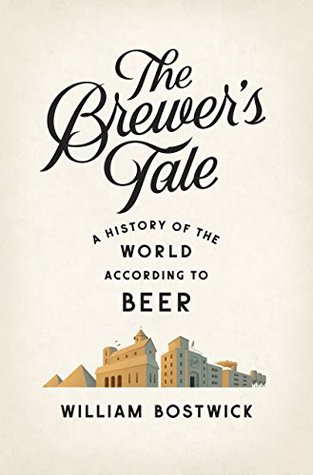More on this book
Kindle Notes & Highlights
Read between
July 25 - November 23, 2018
Ever since we’ve been asking ourselves what’s for dinner, we’ve also been asking what to drink with it.
Our first recorded recipes were for beer because beer was the first thing we made that required a recipe, our first engineered food.
rawhide pouch or tangled in a horse’s mane, took root. Germanic tribes were cultivating wheat and barley by 5000 BC and Celtic bands on the British Isles soon after. It wasn’t long before the first breweries emerged. The earliest found to date is at a 3000 BC village in Skara Brae, in the Orkney Islands off the north coast of Scotland.
“You use what you have. Every beer happened for cultural, economic, governmental, political reasons. When we try to copy a style from somewhere else, it’s totally bogus,” Brian
When Saint Benedict decreed in his book of precepts that monasteries following his Benedictine order welcome passing travelers with food and drink, and that his monks stay self-sufficient, living “by the labor of their hands,” that work included brewing.
Brewed for sustenance to warm tired travelers and fasting monks, the beers were rich and packed with nutrients, made hearty and sugary strong with loads of grain.
But it’s more likely cooks instead used spice to temper salt—the day’s only preservative.
With origins so strange and distant, most assumed spices grew in paradise. (Hence the eponymous grains, actually from West Africa.)
But most often medicinal spices were delivered in beer. Specific beers were said to cure specific ailments, from coughs to tumors, from “the stone” to “the itch.”
Saint Arnold of Metz reportedly saved his town from a sixth-century plague by serving them the monastery’s own spiced beer instead of water. Now, he’s the patron saint of brewers.*
Made from bursting granaries and groaning spice racks, monastic beers were brewed meaty and flavorful, not just for health and sustenance but for the sake of preservation. Extra grain meant extra sugars for yeast, which produced extra alcohol. Alcohol, naturally antibacterial, keeps stronger beer from going sour.
The abbess, mystic, and early Christian botanist Hildegard of Bingen said in her twelfth-century herbal that hops “were not very useful.” They “make the soul of man sad, and weigh down his inner organs.”† And so hops fell outside the church’s Gruitrecht. The powerful plant—Humulus lupulus, or climbing wolf; it spreads vigorously if left unchecked—was untaxed and free for the plucking.
The political tumult of the Renaissance didn’t help matters, least of all in Belgium. The country, if one could call it that at the time, was more a loose net of states and provinces before it finally succumbed to Napoleon’s domineering rule. By the turn of the twentieth century Europe’s monasteries were in ruins, their breweries shuttered, their kettles melted into girders and bayonets or simply left to rust.
The Trappist abbey Orval, sacked in the 1790s, wasn’t rebuilt until 1926. The monks there added a brewery to help finance construction and hired a German brewmaster to run it.
in 1919 a reform-minded government banned spirits from bars (a prohibition not lifted until 1984). Belgian drinkers missed their kicks.
Westmalle was probably the first to the party, adding sugar to its beer in the 1920s and ’30s. The lightest and strongest Westmalle made was called Superbier, later renamed Tripel.
Saisons varied around the region, their flavors altered to suit local tastes. Miners and smelters liked them rich and strong; farmhands, or saisonniers, preferred something light and dry. Those preferences split Wallonia’s beer, like its economic activity, in two: the malty Bière de Garde (“beer to store,” so called for its longevity) and its crisper cousin known simply as saison, for the seasonal farmworkers who most enjoyed it. Flavors
The old-school lambic brewer Lindemans was once infamous for an epic boil that lasted twelve hours.
Discovered in 1904 by a Carlsberg brewery lab tech named Niels Hjelte Claussen, Brettanomyces means “British brewing-industry fungus,” named after the old, stale English beers in which he first found it.
“Preservation through acidification,” Jason says. It’s ironic. They won’t go bad because, in a sense, they already have. “These are indestructible. I’ve had a fifteen-year-old gueuze that tasted like it was two.”
“There aren’t really any rules,” he said. “Luciernaga is half saison, half pale ale. IO
One of the most commonly cited reasons for drinking beer in the first place is that it’s cleaner than water. This is somewhat true. A better explanation is that bad beer tastes bad, whereas contaminated water can fool anyone, especially if he’s thirsty.
Variations in flavor were out of brewers’ hands; not matters of choice but dictated by location and method—what kind of wood kilners used or how hot their ovens got. Southern British beers took on the smoky tones of the region’s straw-fueled kilns; western ones were slightly cleaner, made with barley cured over wood.
One was to roast the grains wet. That let kilners use higher heat, which produced darker grains with richer flavor, without scorching the kernels.
Fifteenth-century Flemish refugees from the Hundred Years’ War had brought with them a taste for hoppy beer.


